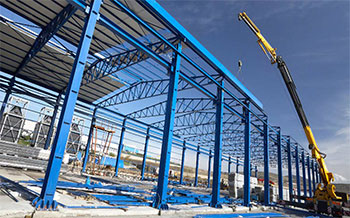
Turnkey Interior Designer in Chennai

TURNKEY INTERIOR DESIGNER IN CHENNAI
What is Commercial Interior Designer
Commercial interior design encompasses the planning and architecture of interiors in various commercial settings, including retail stores, office spaces, restaurants, and more. The design of these environments is crucial for ensuring both functionality and safety, enabling businesses to operate effectively. The influence of commercial interior design on productivity is significant, as it enhances the atmosphere, thereby improving the experiences of both customers and employees.
What is the role of a commercial interior designer?
Commercial interior designers are skilled professionals who focus on balancing functionality and safety with aesthetic appeal. For example, a luxury hotel must accommodate a specific number of guests to optimize profits, while simultaneously creating an impressive experience through spacious accommodations, opulent bathrooms, and breathtaking views. The hotel’s lobby should captivate visitors, and there should be ample space for premium amenities such as spas, saunas, fitness centers, outdoor areas, swimming pools, and dining options.
These designers excel in spatial planning without compromising on design quality. They are also responsible for ensuring that all elements within the building comply with safety regulations and codes. Their involvement in renovation and construction is extensive, as they collaborate closely with contractors and manufacturers to make critical decisions regarding architectural features, lighting, flooring, ceiling design, window placements, and technological enhancements. Additionally, commercial interior designers outline the project’s scope, create schematics and blueprints, select appropriate materials, and manage budgeting and scheduling, among other essential responsibilities.
Upon the completion of the construction phase, the designer proceeds to convert the physical structure into a vibrant and functional environment during the decorating stage. Commercial interior designers select themes and styles that align with the business's requirements, subsequently bringing these concepts to fruition through appropriate color palettes, furnishings, textiles, wall and window treatments, artwork, accessories, and finishing touches.
A skilled and seasoned commercial interior designer possesses the capability to revitalize a struggling business, transforming it into a thriving enterprise. They excel in fast-paced projects, effectively articulating the needs and visions of diverse businesses, and possess a natural talent for envisioning expansive spaces that appeal to clients, guests, and customers alike.
Essentials of Commercial Interior Design
What is the initial thought that arises when considering commercial interior design? Likely, it is an office environment or a retail establishment, which is indeed accurate. Commercial interior design encompasses a wide range of settings, including hospitals, factories, warehouses, schools, offices, retail outlets, clinics, and beyond. Below are some of the key characteristics of this design discipline.
Functionality: The primary aim of commercial design is to establish an environment that enhances workflow, efficiency, and productivity. This encompasses thoughtful space planning, the selection of ergonomic furniture, and layouts specifically designed for particular activities.
Branding: An effectively designed commercial space should embody the brand identity of the company. Design components, including color schemes and types of furniture, should clearly communicate the brand's values, message, and target audience.
Target Audience: It is essential to comprehend who will utilize the space. This includes considering the needs of employees in an office, the demographics of clients in a retail environment, or the comfort of patients in a healthcare facility.
Regulations and Safety: Commercial spaces are required to adhere to specific building codes, safety regulations, and accessibility standards. Designers must be knowledgeable about these regulations and ensure their designs are compliant.
Differences Between Residential and Commercial Interior Design:
A commercial interior designer must possess a comprehensive understanding of the distinctions between residential and commercial projects. Residential interior design focuses on crafting personalized living spaces for individuals or families. The primary goals are comfort, functionality, and the reflection of the homeowner's personality. Designers evaluate living habits, interests, and the number of occupants to create a space that caters to their unique needs.
In contrast, commercial design aims to establish a particular atmosphere for a business or public venue. The focus shifts to attracting and engaging customers, employees, and visitors. Key considerations include brand identity, functionality for the intended purpose (such as restaurant layouts or office workstations), and the creation of a favorable user experience (like a welcoming café environment or an efficient workspace).
Process of Commercial Interior Design
To achieve a successful commercial interior design, it is essential for professionals to understand the specific steps involved in the process.
1. Pre-Design
At the outset of each project, a corporate interior designer must collect a variety of information, including insights from clients and their target market. Key topics to address during the initial discussions include:
- What are the client's visions for the intended use of the space?
- What do clients or employees hope to gain from their work environment?
- How should the design of the space effectively represent the company's brand image?
This phase allows for the curation of the project through brainstorming and the presentation of ideas.
2. Space Planning and Layout
In this phase, designers meticulously evaluate the existing space, including its dimensions, flow, and functionality. Discussions typically revolve around space code restrictions and the potential addition of utilities, such as selecting a larger water heater, an upgraded HVAC system, or kitchen appliances. This stage also encompasses critical planning elements, including the number of exits, corridors, windows, doors, restrooms, fire exits, and more.
3. Design Development
The chosen commercial interior design concept undergoes further refinement during this stage. This process includes the creation of detailed drawings, material specifications, furniture selections, and lighting plans.
4. Construction Documents
At this point, the commercial interior designer prepares comprehensive architectural drawings and specifications that adhere to building codes and regulations. These documents are essential for obtaining the necessary permits from relevant authorities.
5. Project Management
Throughout the construction phase, the designer supervises the execution of the project, ensuring compliance with plans and specifications while facilitating communication among all parties involved.
Designing Interior Spaces for Commercial Enterprises
Creating outstanding commercial environments necessitates a comprehensive strategy. This is where the skills of commercial interior designers become essential.
Defining Business Objectives
The initial phase involves a thorough exploration of your organization’s vision, mission, and fundamental values. Commercial interior designers work closely with you to grasp your target audience, brand character, and intended business results.
Space Organization and Usability
Commercial interior design extends beyond mere furniture arrangement. It focuses on optimizing traffic patterns, enhancing storage options, and establishing specific areas for distinct functions.
Visual Appeal and Brand Representation
Interior design acts as a compelling narrative medium. Designers convert your brand identity into a physical experience through the use of color schemes, patterns, textures, materials, and furniture choices. Each component, from flooring to lighting, plays a role in shaping the overall atmosphere and conveying your brand message.
Enhancing Wellbeing and Comfort
The focus of commercial interior design is on the health and comfort of both employees and customers. Incorporating ergonomic furniture, maximizing natural light, and integrating biophilic design elements can greatly improve comfort, satisfaction, and overall productivity for both staff and clientele.
WAREHOUSE STEEL STRUCTURAL CONTRACTORS
Warehouse Shed Cost - Estimation Per Sq ft

Why To Choose Warehouse Builders?
Learn More
Essential Blogs for the Construction Industry
Learn More
Pre-Engineered Building Future of Construction Industry
Learn MoreOur Commercial Construction Works
When you choose us, you'll feel the benefit of 20 years' experience of industrial construction services. With our capacity to meet the mass requests, we have had the option to take special care of the requirements of our significant clients.
Warehouse Construction
The most common material used for warehouses is steel, creating a pipe system that supports the outside cladding & roof.

Industrial Construction
Industrial construction deals with factories, power plants, warehouses, and other highly specialized facilities.

PEB
Manufacturers
Pre-Engineered Building is the fundamental based design which directly manufactured by the PEB Manufacturers association.

PEB
Contractors
PEB is the ideal choice for any kind of construction needs whether it is for the individual reason/for the business reason.

Pre-Engineering Building
Pre-Engineering Building are broadly utilized in the residential just as industrial sector for its unparalleled attributes.

PEB Steel
Building Construction
Steel is heat proof, meaning it will not totally stop a fire. Steel is one of the most durable materials for construction.

